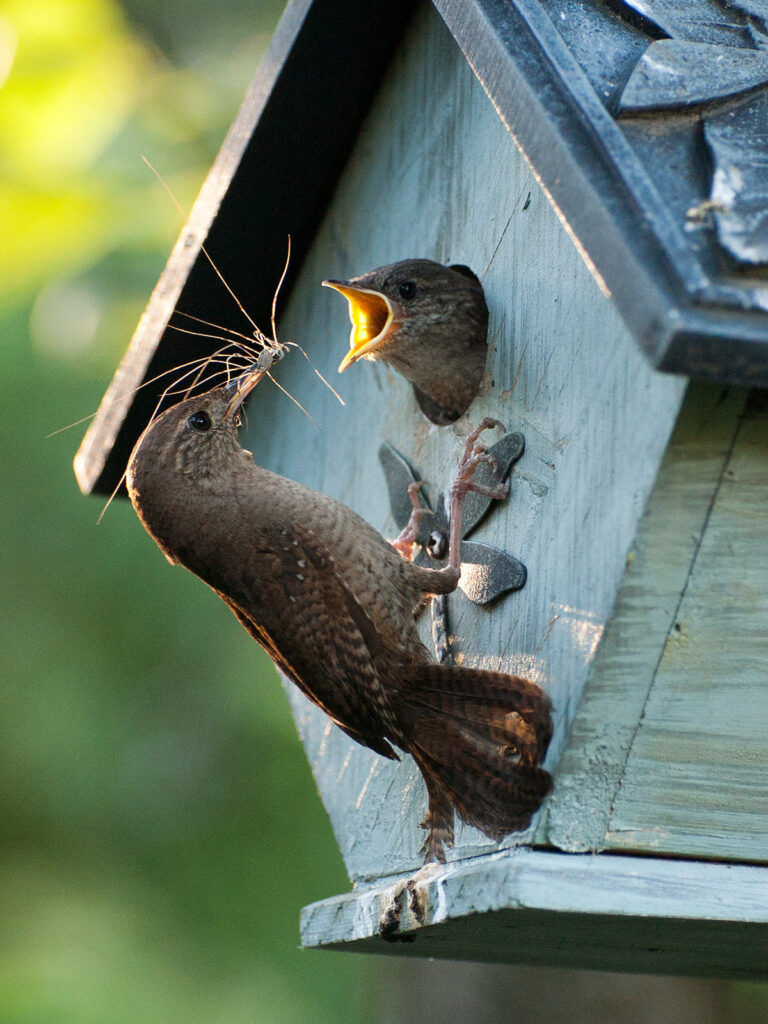
The most important food for most birds, especially when feeding their young, is insects — even for hummingbirds despite the common belief that all they need is nectar.
It’s easy to know how to provide seeds, nectar, and berries. Simply provide plants that have these things. But how to provide insects?
It’s easy.
Plant native plants and the insects will be there. No native plants, and you won’t have the insects that birds and other creatures need.
This catbird baby has a little insect in its beak.
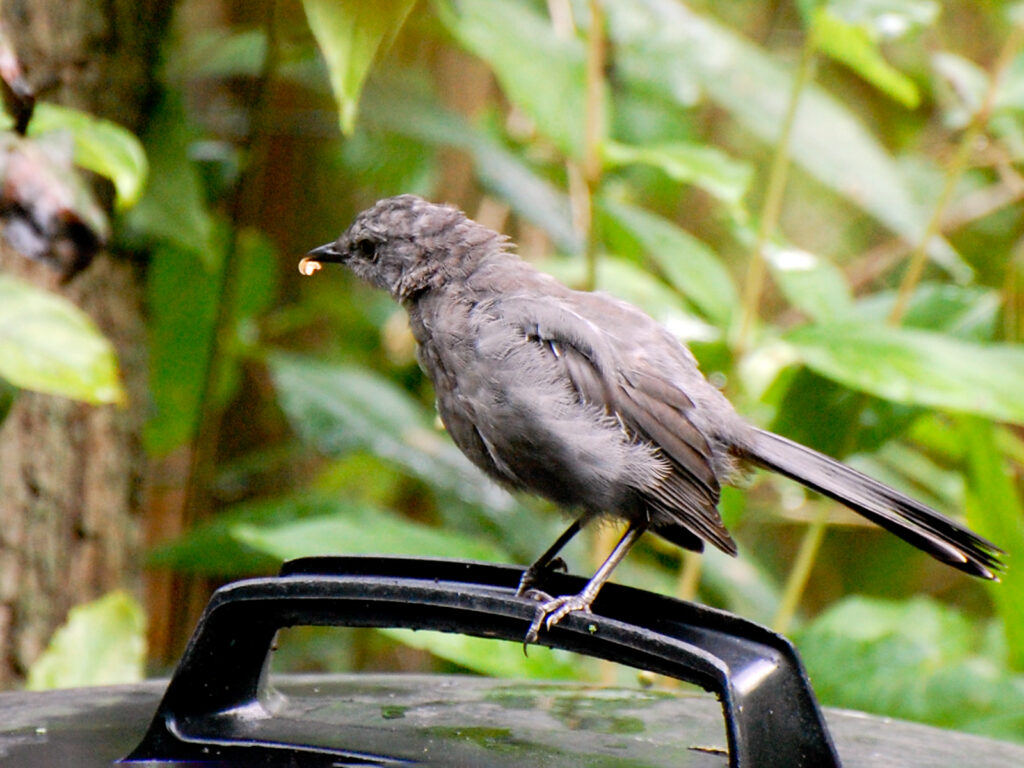
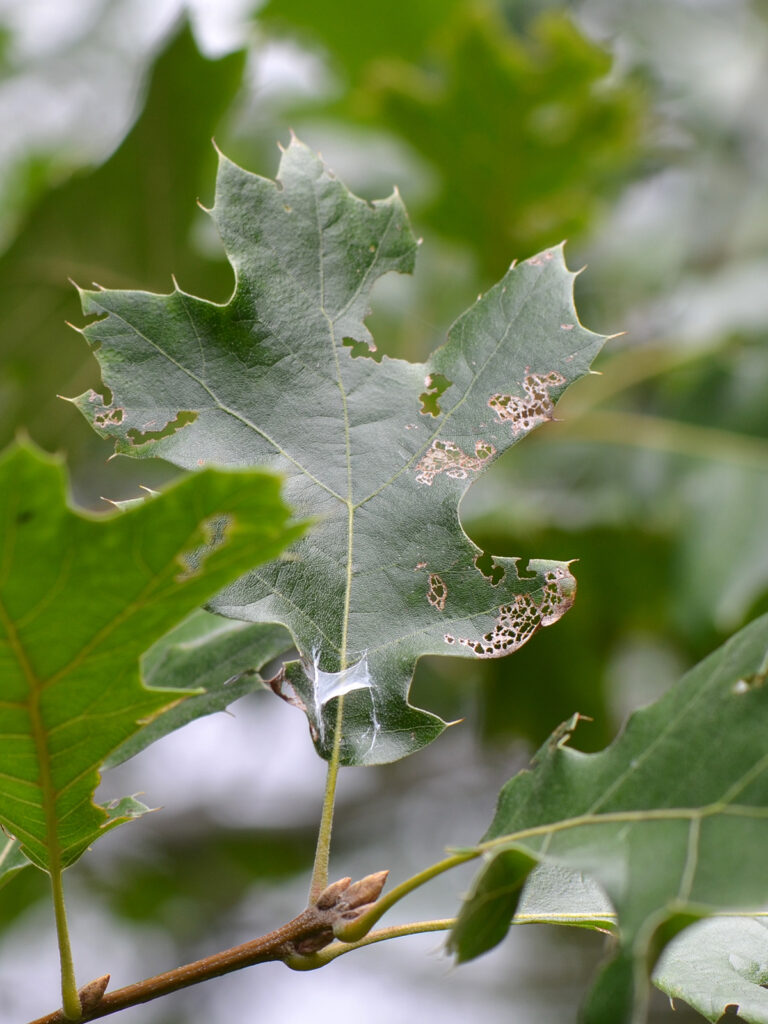
In the past (and in my own ornamental gardening days), not having insects around sounded appealing. Isn’t being insect-free what gardening is all about?
But after reading Eric Grissell’s book Insects and Gardens, and then Douglas Tallamy’s book Bringing Nature Home, I understood why insects are important for the health of my garden and — even more important — for preserving biodiversity and a healthy planet.
I’m happy to see these oak leaves being used!
Insects are the foundation of healthy ecosystems, and native plants are what they’re able to eat. It’s what they evolved with. And birds think they’re yummy!
We aren’t worried about a few holes in the leaves. If they look like something has been eating them, we celebrate (provided it’s not being eaten by a non-native invasive insect like Japanese beetles)!
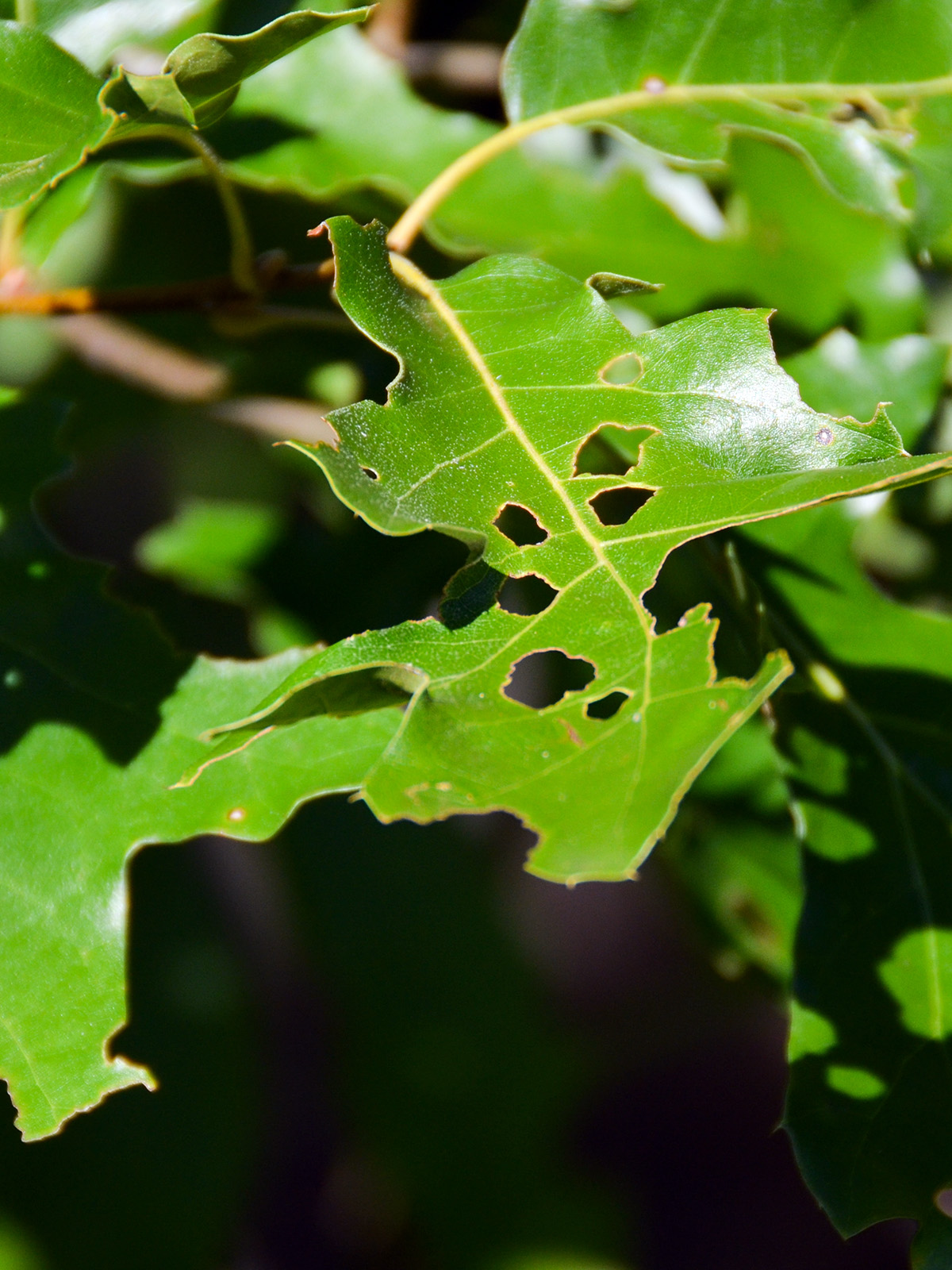
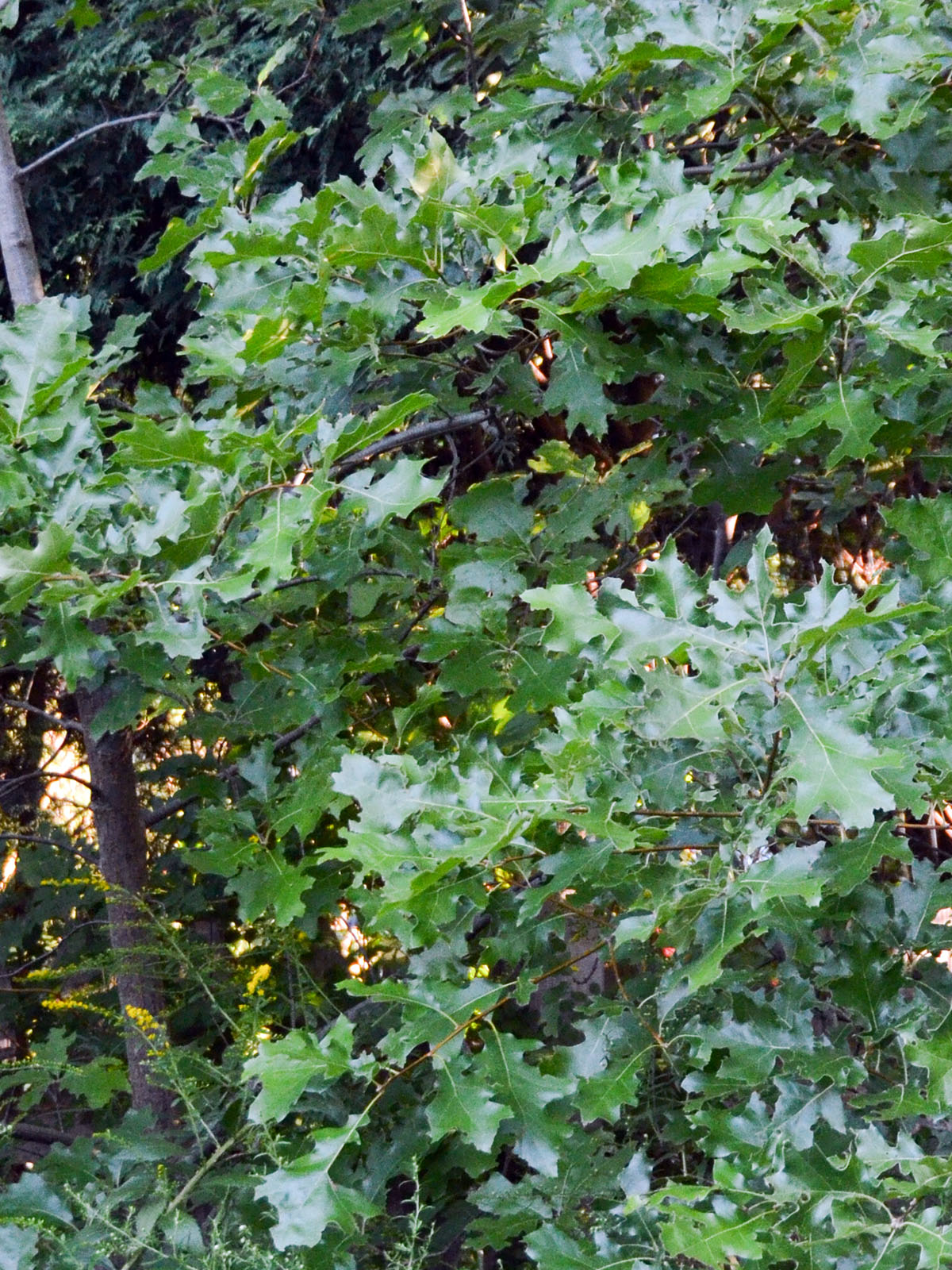
But even if they look pretty hole-y, we use Tallamy’s Ten Step Rule: Take ten steps back and the “problem” disappears!
CAUTION! CAUTION! CAUTION!
Many conventional nurseries offer collections of plants supposedly for birds. For example, one collection I noticed online included a cultivar of the native Aronia arbutifolia ‘Brilliantissima’, a cultivar of the non-native Viburnum plicatum tomentosum ‘Summer Snowflake’, and a cultivar of the non-native Callicarpa japonica ‘Early Amethyst’. This was the best they could do — a cultivar of a native, and two cultivars of non-natives?
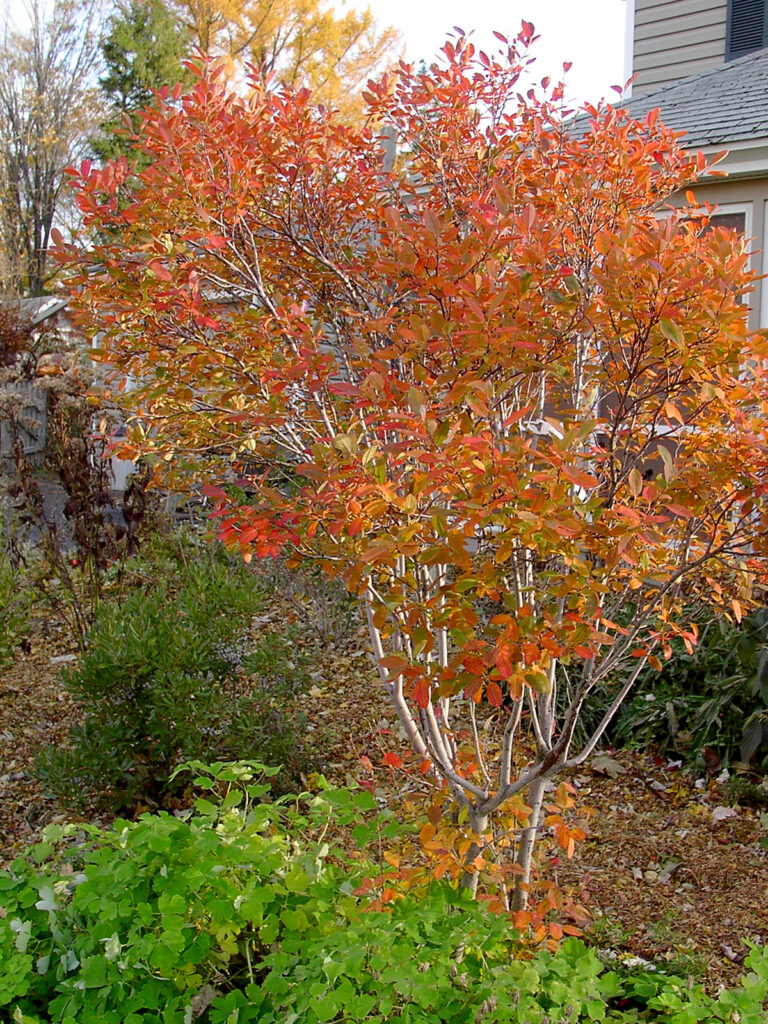
Our serviceberry cultivar had few berries — the very thing I bought this expensive plant for! It definitely is sold for its decorative value as I later found out on the Missouri Botanical Garden website which noted that while there was an abundance of flowers, “less than 10% of the flowers produce mature fruit.” I was very disappointed to see they then recommended it as “Best in woodland, naturalized or native plant gardens, especially with dark or shaded backdrops which tend to highlight the form, flowers and fall color of the plant.” In other words, promoting plants simply as a way of decorating our yards.
It’s true that they may have some berries (though often fewer berries than non-cultivar species), but non-native plants and often even cultivars of native plants usually don’t support the insect populations birds really do need even more than the berries.
Of course, birds will eat them (just as our kids will eat good-tasting but unhealthy processed foods). But the berries of non-natives often aren’t as nutritious or may even make them sick. For example, unlike our high-fat native berries that mature during migration season, some non-native berries that mature in fall have a higher sugar content and don’t provide that long-lasting fuel they need to complete their long journey. And some shrubs, such as the non-native buckthorn (Rhamnus cathartica), as the “cathartica” species name hints at, may have a laxative effect that affects birds’ health.
These plants are just ornamental shrubs in disguise, fooling people into thinking they’re doing something for birds. Don’t fall for it!
Birds eating insects
Here are birds eating various kinds of insects (or worms) or feeding them to their babies — an extremely important source of high-quality protein for baby birds.
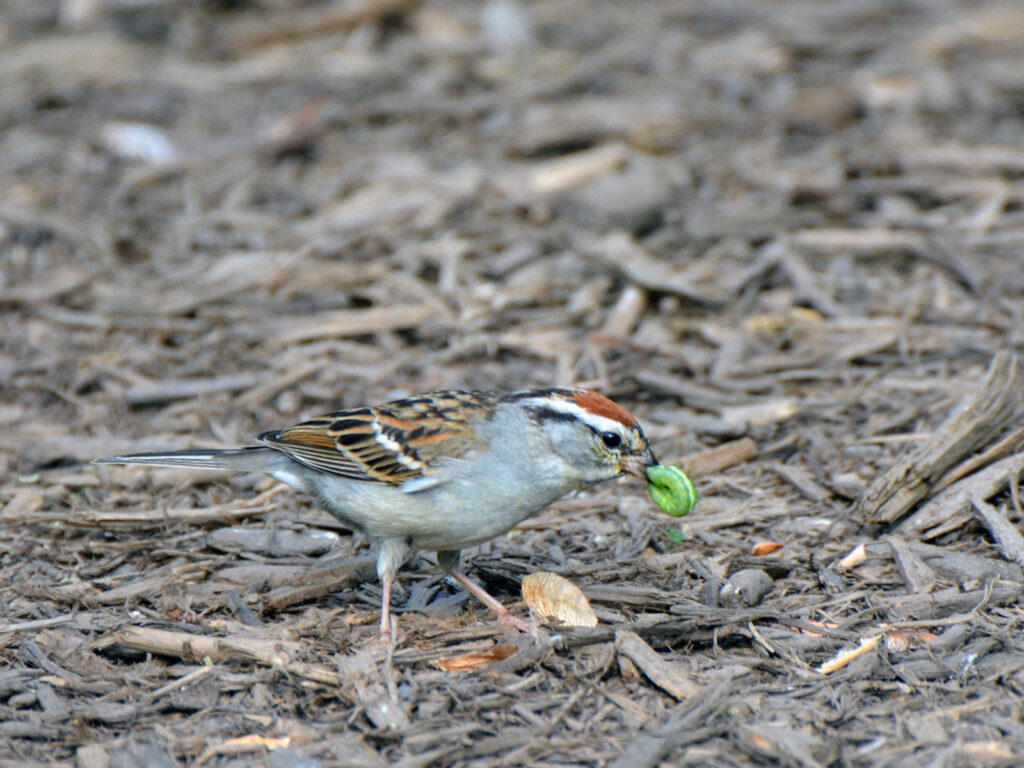
This chipping sparrow found caterpillars throughout the yard.
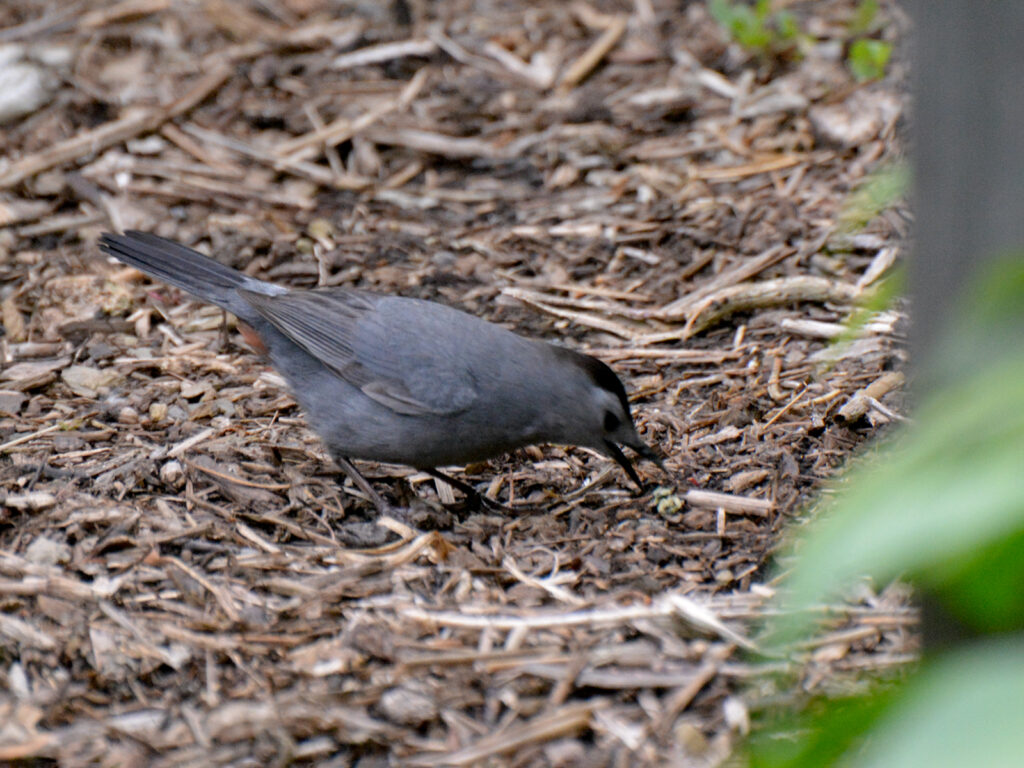
I was surprised to see this catbird chase down a bumble bee. It took him a while, but he finally got it.
I love my bumble bees, so I was a little upset … until I remembered that it’s people — not birds — who are responsible for the problems bees are having.
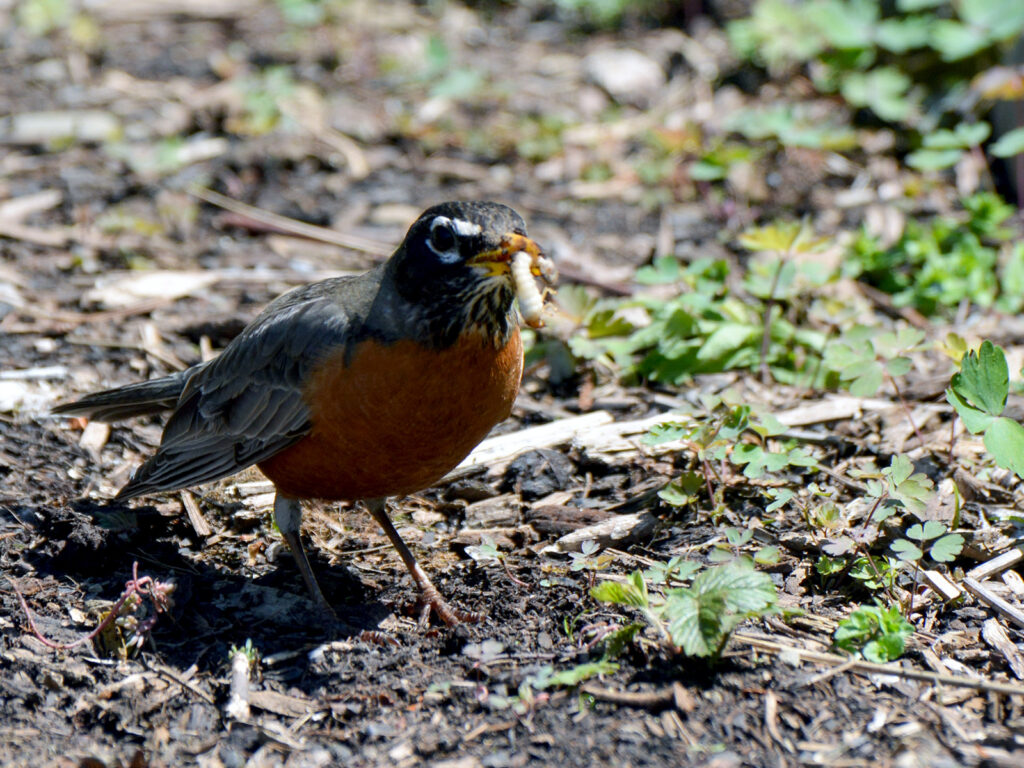
I noticed a few robins industriously stabbing their beaks into the edges of our path and wondered what the attraction was.
When I took a photo, I saw the reason – tasty grubs! An unseen (to me) “grocery store” was just below the surface!
This chickadee is checking a dead stalk, looking for a tasty morsel. Perhaps he had previously cached some insects or seeds there or maybe he was looking for an insect who had chosen to overwinter there.

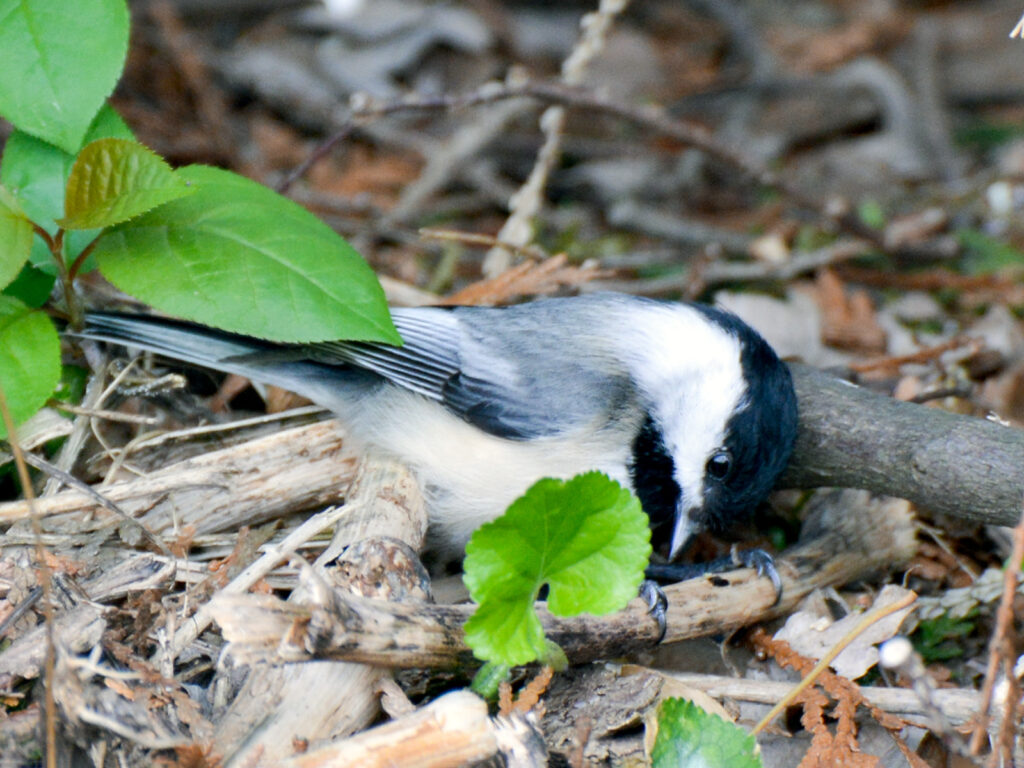
I could tell this chickadee had found something special. He was spending quite a bit of time intently working under the arborvitaes, looking at these old dead stalks, which had been left over from the previous year. I was glad I hadn’t raked up this “mess” and put it out to the curb as seems to be the custom these days.
When the chickadee had eaten his fill (or had gotten annoyed that I was standing there taking his picture), he flew away.
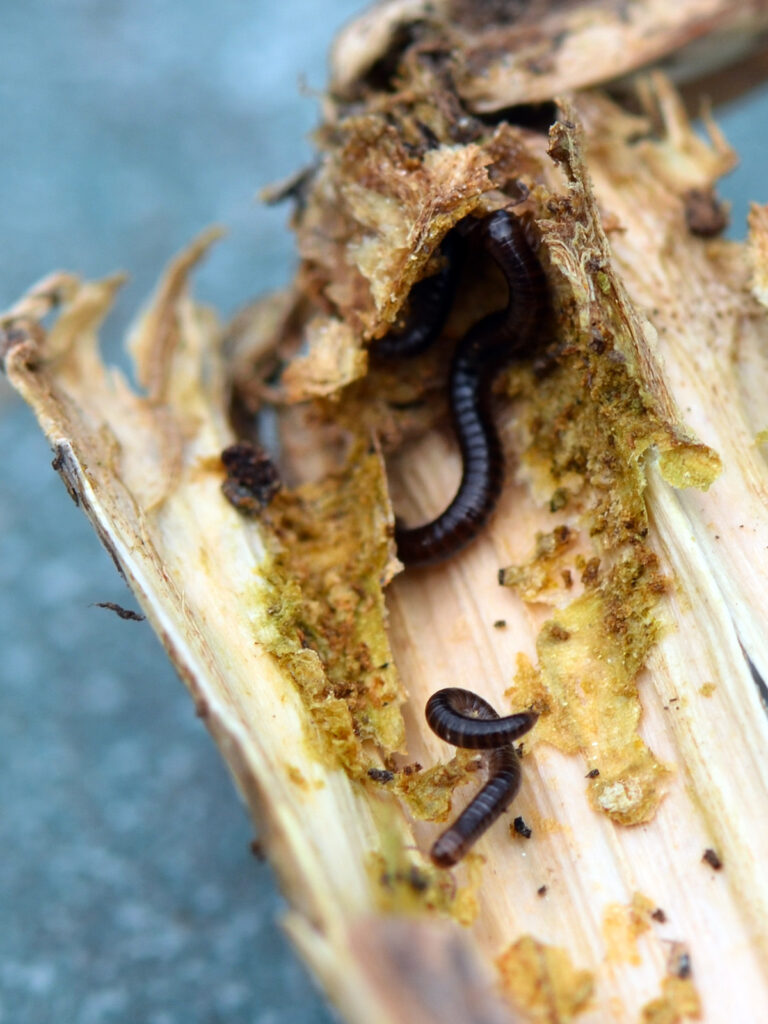
I was curious to see what had aroused such interest, and I wasn’t surprised when I opened up one of the old stalks and discovered a number of worms curled up inside just one of these old dead stalks. There were other little insects there, too.
This old dead flower stalk was one of many that we had left to decompose where they fell, so I wasn’t surprised to see him back again to get another snack. We leave many of the dead flower stalks over the winter.
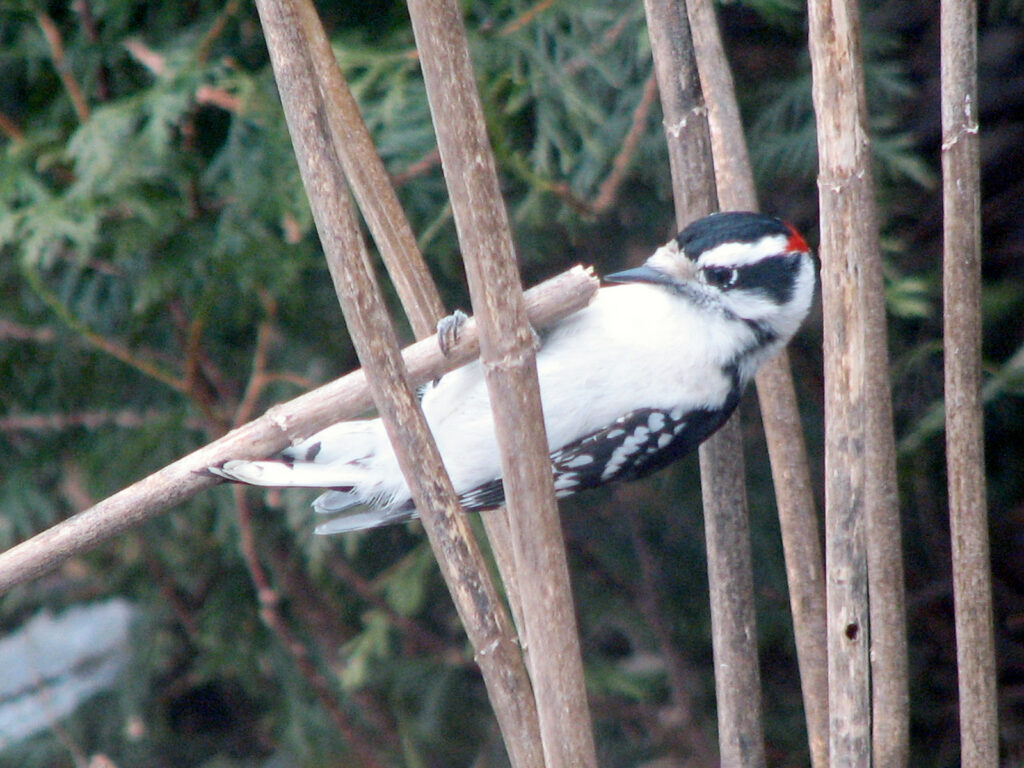
As Grissell says in Insects and Gardens, if you don’t leave a place for the “bad” things to overwinter, you’re also not leaving a place for the “good” things to overwinter. And you’re also not leaving these handy “insect storage units” for birds.
Resources
- Journey North:
- Going buggy! Insect-eating birds – categories of insects and the birds who eat them
- Cornell Lab of Ornithology:
- Audubon at Home:
- Why Native Plants? – Doug Tallamy (video in middle of the page)
- Saving Birds Thru Habitat:
- Why we should care about spiders (Note: spiders aren’t insects)
Reflections
When birds burp, it must taste like bugs.
~ Bill Watterson, creator of Calvin and Hobbes cartoon
Animal substance seems to be the first food of all birds, even the granivorous tribes.
~ William Bartram, 1739 – 1823
